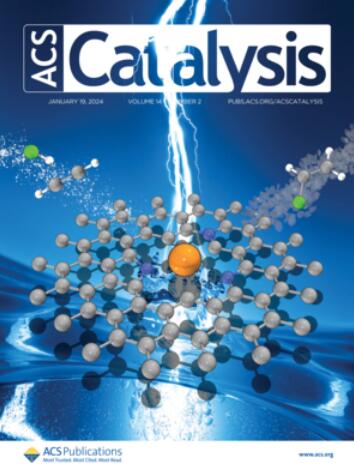Atomic Insights into Catalyst–Substrate Interfaces of Self-Supported Electrodes for Energy Conversion and Fuel Synthesis
IF 13.1
1区 化学
Q1 CHEMISTRY, PHYSICAL
引用次数: 0
Abstract
Recent breakthroughs in electrocatalyst design have advanced key redox reactions for large-scale green hydrogen, carbon-based fuel and ammonia production, while rechargeable metal-ion batteries continue to transform the mobility sector. However, charge and mass transfer limitations hinder the efficiency of several electrocatalysts at high current densities, prompting the growing adoption of self-supported electrodes as a solution. These self-supported flexible electrodes, with catalysts directly grown on metal or nonmetal substrates, provide superior conductivity and extended stability under extreme conditions. This approach lowers overpotential, increases current density and electrochemically active surface area (ECSA), and enhances the intrinsic activity through improved turnover frequency (TOF), mass activity and specific activity. This perspective explores the atomic-level electronic structure at catalyst–substrate interfaces, with a focus on orbital interactions that govern reaction pathways and active sites in the anchored electrocatalysts. It also explores the fabrication methods and structural variations of self-supported electrodes in key electrochemical processes, including oxygen evolution reaction (OER), hydrogen evolution reaction (HER), metal–air batteries, CO2 reduction reaction (CRR), nitrogen reduction reaction (NRR), nitrate reduction reaction (NO3RR), and electrochemical urea synthesis. Alongside a market survey and overview of existing self-supported systems, it also addresses catalyst–substrate interfacial challenges and experimental methodologies critical to advancing this field.

用于能量转换和燃料合成的自支撑电极的催化剂-衬底界面的原子见解
最近电催化剂设计上的突破推动了大规模绿色氢、碳基燃料和氨生产的关键氧化还原反应,而可充电金属离子电池继续改变着移动领域。然而,电荷和传质的限制阻碍了几种电催化剂在高电流密度下的效率,促使人们越来越多地采用自支撑电极作为解决方案。这些自支撑柔性电极,催化剂直接生长在金属或非金属衬底上,在极端条件下提供卓越的导电性和扩展的稳定性。这种方法降低了过电位,增加了电流密度和电化学活性表面积(ECSA),并通过改善周转频率(TOF)、质量活性和比活性提高了固有活性。这一观点探讨了催化剂-衬底界面的原子级电子结构,重点关注控制锚定电催化剂中反应途径和活性位点的轨道相互作用。探讨了自支撑电极在析氧反应(OER)、析氢反应(HER)、金属-空气电池、CO2还原反应(CRR)、氮还原反应(NRR)、硝酸盐还原反应(NO3RR)、电化学尿素合成等关键电化学过程中的制备方法和结构变化。除了市场调查和现有自支撑系统的概述外,它还解决了催化剂-基质界面的挑战和实验方法,这对推进该领域至关重要。
本文章由计算机程序翻译,如有差异,请以英文原文为准。
求助全文
约1分钟内获得全文
求助全文
来源期刊

ACS Catalysis
CHEMISTRY, PHYSICAL-
CiteScore
20.80
自引率
6.20%
发文量
1253
审稿时长
1.5 months
期刊介绍:
ACS Catalysis is an esteemed journal that publishes original research in the fields of heterogeneous catalysis, molecular catalysis, and biocatalysis. It offers broad coverage across diverse areas such as life sciences, organometallics and synthesis, photochemistry and electrochemistry, drug discovery and synthesis, materials science, environmental protection, polymer discovery and synthesis, and energy and fuels.
The scope of the journal is to showcase innovative work in various aspects of catalysis. This includes new reactions and novel synthetic approaches utilizing known catalysts, the discovery or modification of new catalysts, elucidation of catalytic mechanisms through cutting-edge investigations, practical enhancements of existing processes, as well as conceptual advances in the field. Contributions to ACS Catalysis can encompass both experimental and theoretical research focused on catalytic molecules, macromolecules, and materials that exhibit catalytic turnover.
 求助内容:
求助内容: 应助结果提醒方式:
应助结果提醒方式:


